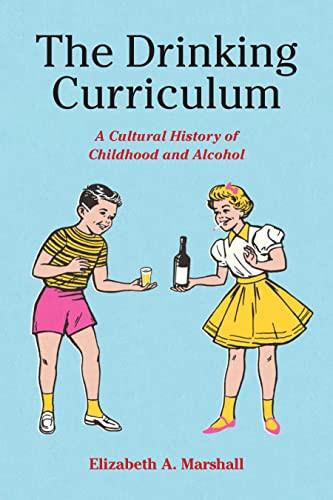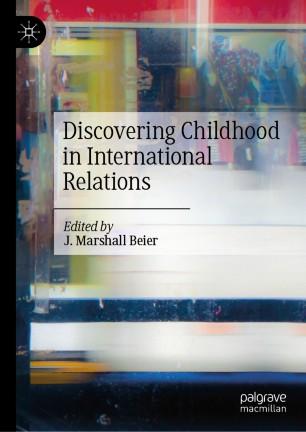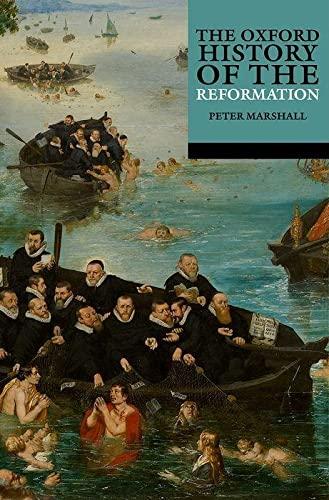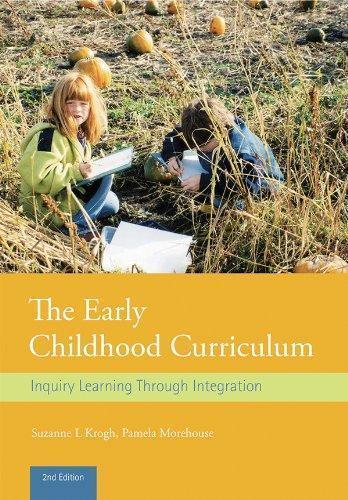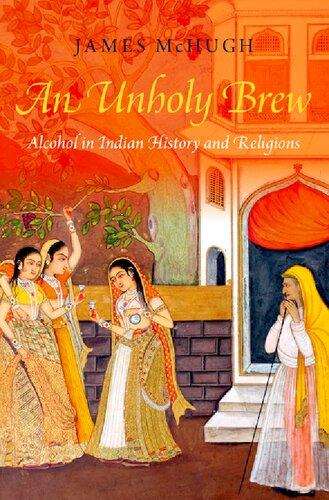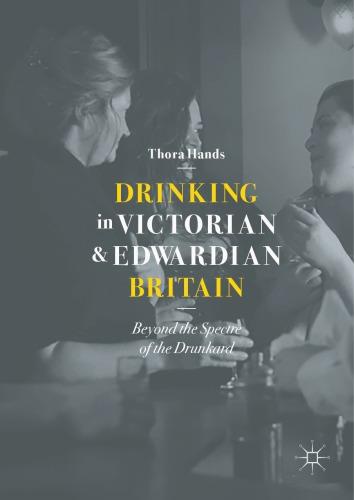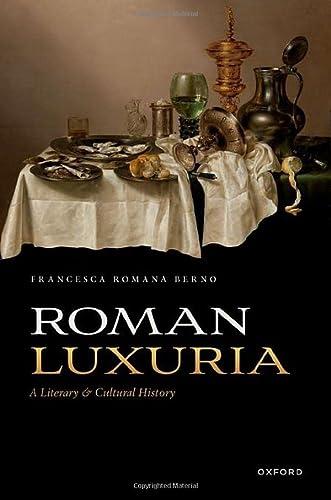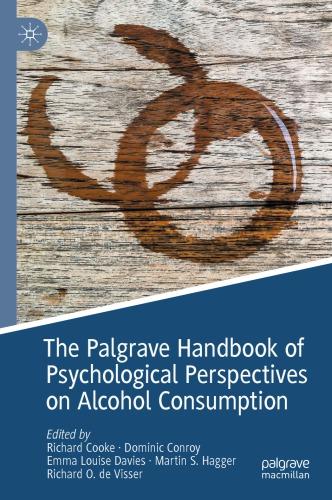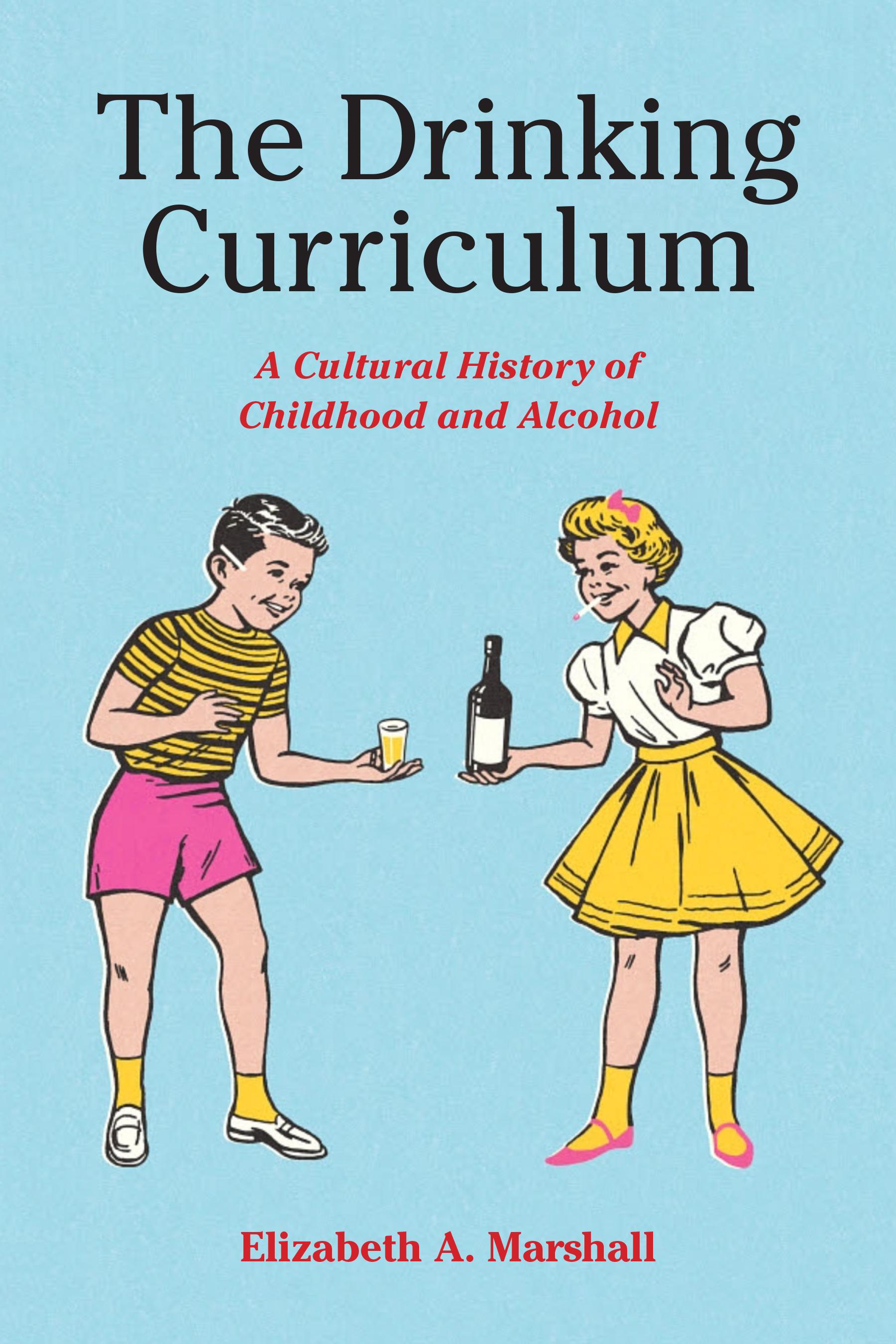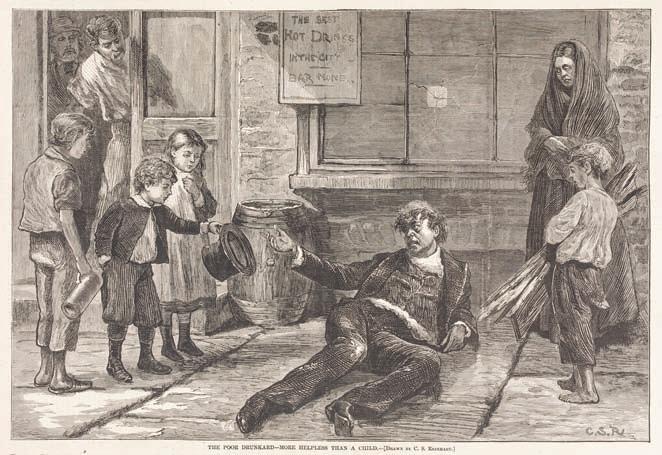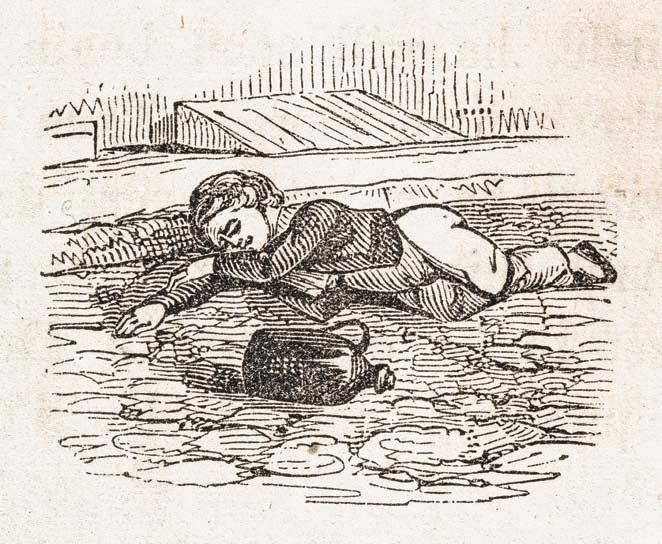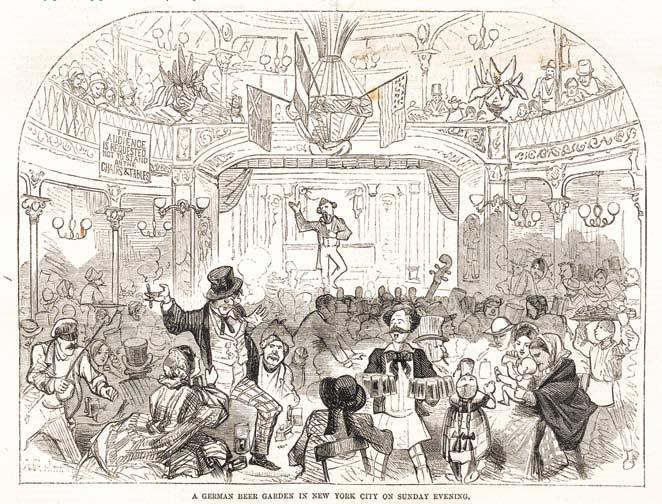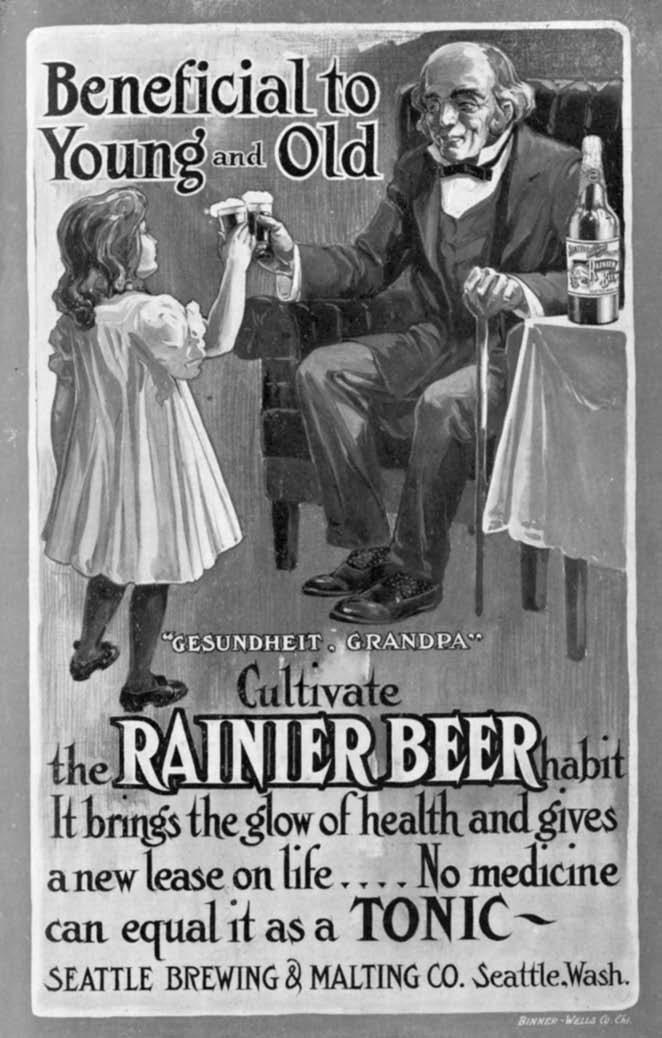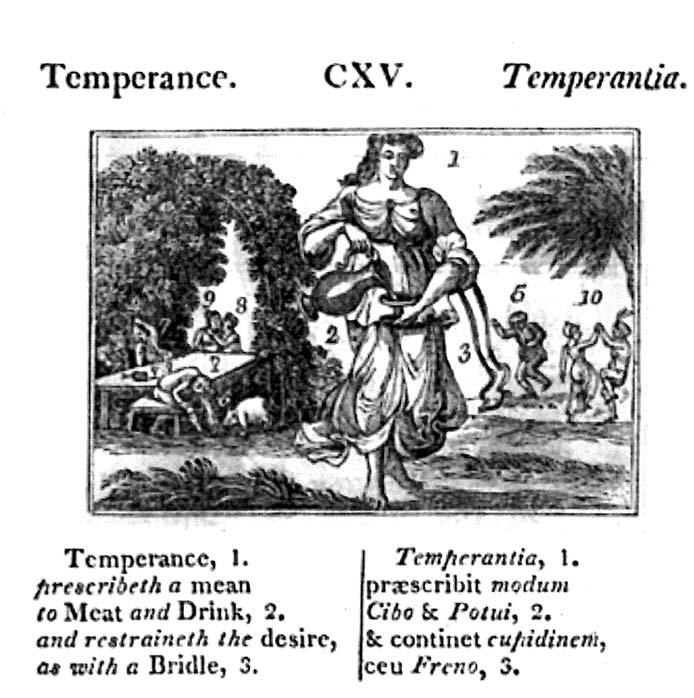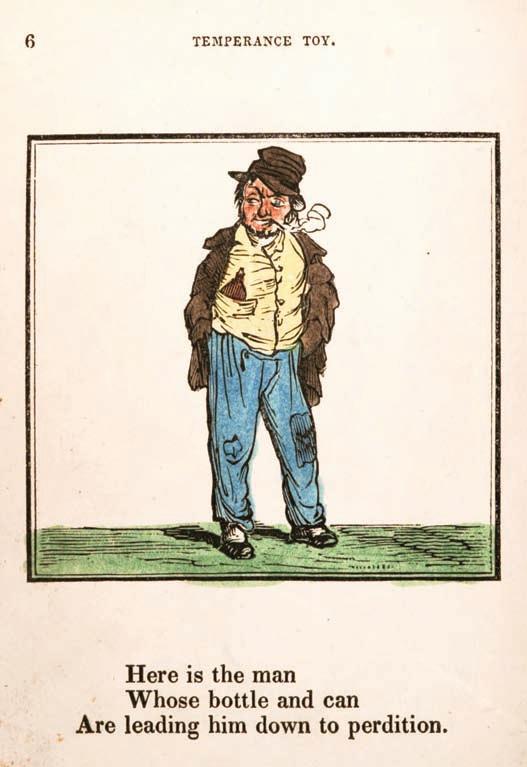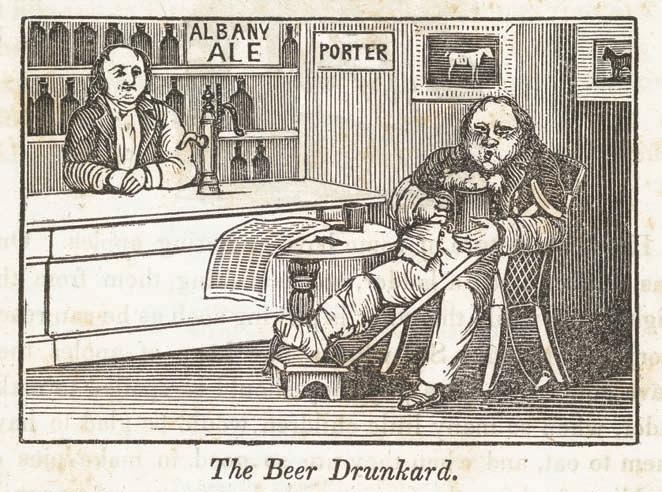Introduction
Learning to Drink
In The Little Boy and His Mother published in 1833, a young boy reaches eagerly for a glass of rum sweetened with sugar (see Figure 1).1 A dialogue between a fictional child reader and his mother ensues.
Child: Will he be a drunkard, mother?
Mother: I cannot tell; but I should think he is in a fair way to that end. He has the appetite of a drunkard, in the same proportion as he has the size of a man.
Child: Will his mother give him some rum and sugar, does mother think?
Mother: Very likely; for a great many parents thoughtlessly include their children in their foolish and injurious demands, in addition to setting them a bad example.
Alcohol is frequently pictured in U.S. culture in advertisements, TV shows, cartoons, film, and comics as well as in children's books like The Little Boy and His Mother. Perhaps most surprising for twenty- first- century readers, children drink.
Indeed, a curriculum about the pleasures and pitfalls of alcohol has been in place in visual culture for almost two centuries. Often assumed to be the soberest of spaces, texts for or about the child are anything but. The example that opens this book might seem like an anachronism. Surely drinking children are a thing of the past, and adults in the twenty-first century know better than to visualize underage imbibing in a book for children, even if it is a cautionary tale. Yet, drinking and drunk children hide in plain sight.
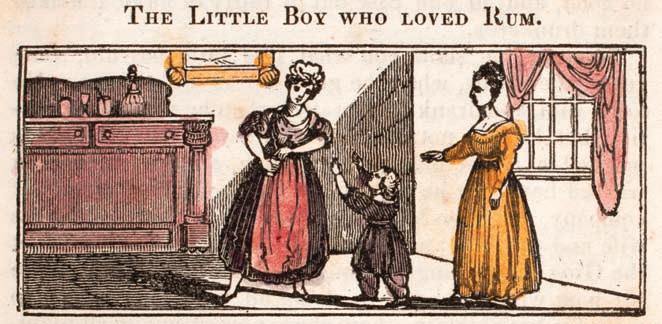
This is a curious claim to make because for decades adults have concerned themselves with the appropriateness of what children read and view, attempting to police childhood's borders into a G-rated haven. For instance, one common approach for studying alcohol in children's texts, advertisements, and other media typically employed in education, communication, health, and psychology focuses on the potential dangers of its appearance in visual and material culture.2 Countless studies document the potential risks to actual children who consume fictional portrayals of drinking and drunkenness. The logic goes something like this: If youth are exposed to the wine-toting Little Red Riding Hood in Trina Schart Hyman's 1983 picture book (challenged in the 1990s for ªpromoting alcohol to youthº), popping champagne bottles in Disney's Beauty and the Beast, pro-alcohol messages on T-shirts from Urban Outfitters, or as one New York Times reporter put it, the ªjarringº images of teen drinking in the 2009 film Harry Potter and the Half-Blood Prince, then they will be more susceptible to substance abuse.3 Research on the frequency of and exposure to representations of drinking in children's media is no doubt an impor tant line of inquiry. However, as James Kincaid notes, stories of protection are ªalso stories of incitement; the denials are always affirmations.º4 The image of the rum-loving boy, for example, both disavows and confirms alcohol's gratifications. Simply put, while mainstream culture invests a lot of energy pearl-clutching about the child's exposure to harm, the texts created for and consumed by children repeatedly tempt them into the delights of intoxication. This book investigates that paradox by bringing to light what I call ªthe drinking curriculum,º a set of cultural lessons that rely on images of fictional-
Figure 1. Illustration from The Little Boy and His Mother (1833). Courtesy, American Antiquarian Society.
ized childhood to animate adult anx ieties and preoccupations about alcohol. This is a cradle-to- grave program that teaches through visual culture and that relies on both horror and humor to educate. The drinking curriculum doesn't follow a linear progression and there are no lock- step stages of development to be assessed. Alcohol's presence is at once omnipresent and indiscernible, and to understand this ªrequires a mixture of seeing and learning not to see.º 5 One of the drinking curriculum's most enduring outcomes is that it teaches us how not to see alcohol, even as images of drinking, drunkenness, and childhood consistently flicker in the background.
To that end, the following pages examine ªthe childº and alcohol in popular visual texts. The child in this study is a functional figure, ªa malleable part of our discourse rather than a fixed stage; `the child' is a product of ways of perceiving, not something that is there.º 6 Thus, this book is not about how real children might respond to or be influenced by texts about intoxication, but rather how the categories of childhood and alcohol shape one another. This is not to deny the dangers associated with underage drinking, which the Centers for Disease Control and Prevention defines as ªa significant public health problem in the U.S,º or the material conditions in which youth are put in harm's way.7 Nor is this book about the potential risks to witnessing images of alcoholism for children who live with alcoholics. Rather, it is concerned with how the idea of the child and its associations with innocence, vulnerability, wildness, and misbehavior all inhere within our perceptions of sobriety and intoxication.
Of course, the child is a worthy and admirable focus of concern, and no one would question advocating for children's welfare. But the volatility of alcohol in the drinking curriculum's imagery combines with complex and even contradictory adult feelings that get projected onto childrenÐ they are precious, they are unpredictable, they act in ways adults can't get away with and are jealous of, even as adults control children. In this way, adult anx ieties about a whole host of issuesÐ immigration, sex, violence, mental and physical vulnerabilityÐ are projected onto the figure of the child and animated by alcohol. The drinking curriculum answers questions about childhood and drinking by putting the adult back in the frame. The restoration of this figure to the scene of instruction reveals that adults themselves are also the subjects of these ongoing lessons.
The questions addressed in the pages that follow include: Why do we need the child to teach us about alcohol? Why is the alignment of alcohol, drunkenness, and childhood so scandalous? When and to what ends do the child and alcohol appear in visual culture? Who ªprofitsº from the circulation of these familiar images of intoxication and ªwho pays the price?º 8 The Drinking
Curriculum answers these questions as it moves across visual culture, social histories of drinking, and childhood studies.
Childhood, Alcohol, and Innocence
An ongoing reckoning with and public sentiment about alcohol consumption swings wildly across the history of the United States. In the 1820s rum was cheaper to buy in New England than tea; in 1919 the passing of the Volstead Act made the manufacture and sale of alcoholic beverages illegal.9 Cocktail culture flowered in the 1950s, as did the drinking habits of teenagers, while in the twenty- first century neo- temperance trends like #sobercurious or mindful drinking flourish, illustrating how culture and alcohol interact. These examples reveal more than the mere cycling of attitudes toward alcohol, or the corrective swinging of a pendulum from enthusiasm to restraint; rather, they demonstrate ongoing contestations about drinking and drunkenness.
The history of alcohol in the United States focuses almost exclusively on adults who advocated temperance, brewed beer, created speakeasies, campaigned for or against alcohol, and passed legislation that prohibited drinking. Histories from Andrew Barr's Drink: A Social History of Amer ica to Susan Cheever's Drinking in America: Our Secret History and Daniel Okrent's Last Call: The Rise and Fall of Prohibition, include children as footnotes within a larger adult drama.10 Yet, youth were and continue to be used as symbols in national education campaigns whether in the temperance movement or in the charge to create a national minimum drinking age in the 1980s, illustrating the broader culture's vexed relationship with alcohol. While not always the main figure in scenes of intoxication, the child makes a regular appearance. Importantly, pictures of children, whether sober, drinking, or drunk ªare a form of ideas, not reality.º 11 The child in the viewer's line of sight might be obstructed or spotlighted to amplify or downplay agency, vulnerability, and even depravity.
Thus, childhood in the drinking curriculum is elastic, snapping into place in dif ferent time periods and for dif ferent causes. In the current moment, chronological age defines when, where, and who can consume alcohol. Yet, this is a recent invention. Before Prohibition, parents controlled if children drank, and after the repeal of the eighteenth amendment, states passed drinking age laws.12 It is not until passage of the 1984 National Minimum Drinking Age Act that all states adopted 21 as the legal age to purchase or publicly consume alcohol. Even as access to alcohol marks the legal end of childhood, categories of age are always under construction.13 In this book, the term childhood is often used as a shorthand for both the child and the adolescent because categories of age are themselves unsteady. Even more to the point, it is the
contention of this book that drunkenness blurs any fixed line between adulthood and childhood.
Blog posts like ª20 Ways your Toddler is Just Like Your Drunk Friendº on Scary Mommy or videos on YouTube such as ªDrunk vs. Kidº define shared traits of emotional outbursts, required supervision, and loss of bodily comportment, underscoring seemingly common- sense associations between drunk adults and young children.14 Thus, ªchildish deviance bears a striking resemblance to the behav ior of adults when faced with drunkenness, which itself often manifests as childishness.º 15 Of course, these ideas have a history. The connection between childishness and drunkenness was in place in the cultural imagination by at least the mid-nineteenth century (see Figure 2). C.S. Reinhart's 1874 sketch for Harper's Weekly, ªThe Poor DrunkardÐ More Helpless than a Childº evinces this connection, picturing an intoxicated man unable to stand on his own and whose lack of physical and intellectual ability marks his child-like immaturity.
Youth in the sketch are pedagogical objects in a visual argument about failed white manhood. The father turns away from his wife and son in the right foreground toward the white middle- class children on the left side of the image who stand steadfastly staring at the fallen man, their innocence, futurity, and
Figure 2. Charles Stanley Reinhart’s 1874 “The Poor Drunkard—More Helpless Than a Child,” Harper’s. Courtesy, American Antiquarian Society.
moral superiority signified by the white light shining from the top left of the image. The drunkard in Reinhart's illustration leans to his right into the darker shaded side of the image, dangling his pocket watch in exchange for money for drink, intemperate and ill-behaved. Reinhart's portrayal of children employed them as markers of goodness and sobriety. However, this was only one representation.
Tipsy Tots and Where to Find Them
Images of children have been used both to teach about the harm of alcohol consumption and to market its pleasures. In nineteenth- century temperance texts, children are disposable, often quickly eradicated by a drunk adult or by liquor itself. In The Glass of Whisky (1860) published by the American Sunday School Union, a 6-year- old boy inadvertently drinks a jug of rum from a closet and dies in the street (see Figure 3). Temperance advocates used cautionary tales like this one to emphasize that even a sip of alcohol would lead
Figure 3. Illustration from The Glass of Whisky (1860). Courtesy, American Antiquarian Society.
to harm, including death. The text expands the visual message: ªHe tasted it. He liked it. He tasted a little more. Then he drank a good deal. At last he became drunk, fell over, and lay there till he died. He was found dead by the jug of rum.º 16 Like the bottle, the dead white boy is symbolic, a fictional casualty in the nineteenth- century culture war waged around alcohol.
Relatedly, pictures of immigrant children drinking alcohol sought to make an argument about the corrupting influence of outsiders. In ªSketches of the People who Oppose our Sunday Laws,º a schoolgirl in pigtails and a baby drink from steins in a German beer garden. The young girl eagerly downs the last drop of her mug of beer. On the balcony a sign instructs revelers ªnot to stand on the chairs or tablesº and a woman tries to convince an intoxicated man to step down from a table; behind her, a pickpocket waits to strike (see Figure 4). Here, the drinking child symbolizes the corruption of German immigrants who in temperance discourse ª were perceived as boisterous, immoral, nonproductive, and ultimately detrimental to the Republic.º 17
The sketch reflects a debate about liquor laws, like those put in place by the New York State Assembly in 1857 that ªreduced the number of saloon
Figure 4. “A German Beer Garden in New York City on Sunday Evening” (1857) Harper’s Courtesy, American Antiquarian Society
licenses available in the city, placed limits on the amount an individual was allowed to drink and ordered all liquor- dealing establishments to close on Sundaysº as a way ªto force New York's ethnic underclasses to observe the sabbath in what was deemed an appropriate manner.º 18 The nativist sentiments of the temperance movement are communicated through the drinking child, a sign of the community's immorality. Alcohol and immigrants were both damaging influences and a threat to the social fabric of the United States. The Harper's political cartoon also confirms varying cultural, religious, and ethnic conventions about childhood drinking. While temperance advocates regularly manipulated images of children in their efforts to ban alcohol, youngsters were also front and center in the marketing of alcoholic beverages.
Throughout the late nineteenth and early twentieth centuries, corporations like Pabst Brewing Company and Rainier Beer used drinking children in advertising campaigns to advocate for the health benefits of alcohol (see Figure 5). A 1906 advertisement for the Seattle Brewing and Malting Company promotes school- age drinking, once an accepted idea that now seems unimaginable. A girl holds a beer in hand toasting ªGesundheit Grandpa.º Grand father and granddaughter look at one another, eyes locked, toasting from two equal- sized frothy glasses. The girl celebrates her youth and grandpa the glow of his second childhood. The young girl's presence makes positive associations between alcohol consumption via youth's vitality and futurity. The Seattle Brewing and Malting Company and other beverage companies teach about alcohol and intoxication through a pedagogy of pleasure that, like fear, is a signature of the drinking curriculum. These are just a small sampling of tipsy tots in visual culture, but they give us a starting point to consider how the drinking curriculum gives expression to a culture preoccupied with competing impulses toward alcohol in relation to childhood: temperance and intemperance, sanctimony and debauchery, fear and laughter.
Horror and Humor
To be sure, alcoholism is no laughing matter, and as periodic public awareness campaigns and health and safety statistics make clear, alcohol and suffering are causes for concern. However, if the drinking curriculum is the vehicle that delivers lessons about alcohol, humor is riding in the sidecar. Fear and pleasure, violence and comedy coexist in representations of intoxication from the little boy who loved rum in the nineteenth century to the hard- partying baby in Johannes Nyholm's 2011 award-winning film, Las Palmas. 19 Philoso -
Figure 5. 1906 advertisement for Rainier Beer. Courtesy, University of Washington Libraries, Special Collections, ADV0304.
pher Noël Carroll writes that an intimate relationship exists between horror and humor, which are two sides of the same coin, linked ªto the problematization, violation, and transgression of standing categories, norms, and concepts.º 20 Through intoxication, the category of childhood as a state of innocence is consistently violated via fear or pleasure. Whether cautionary or humorous, alcohol and the discourses around it express a deeply entrenched cultural ambivalence about children.
Writing in 1979 for Time magazine, one cultural critic defined this ambivalence as ªa pervasive, low- grade child- aversion in the U.S.º 21 Misopedic impulses have long been communicated within texts created for and consumed by children, snaking through childhood's library from fairy tales to film.22 So, too, in his study of ªThe Dead Baby Joke Cycleº Alan Dundes argues there is a sick streak ªand a longstanding one at thatÐin American humorº that is anti- child.23 In the drinking curriculum, drunkenness provides a culturally sanctioned outlet for picturing violence and humor, expressing how ªall kinds of aversions to and adorations of children occur simultaneously.º 24 Throughout this book, readers will confront drinking humor packaged as comedic violence that takes aim at children, childlike Others, and childish objects.
In Edward Gorey's subversive and satirical alphabet book The Gashlycrumb Tinies: or, After the Outing (1963), for example, Z stands for Zillah who drank too much gin (see Figure 6). Zillah's demise parodies cautionary temperance narratives in which children die from the overconsumption of alcohol in titles like The Glass of Whisky (see Figure 3). Gorey's visual humor, like slapstick, ªnever lingers on the violence, in fact, he invests it with no emotion at allº which tilts his work toward the comic.25 Further exemplifying child harm as a form of humor, when asked in an interview about why his numerous victims are often children Gorey replied, ªIt's just so obvious. They're the easiest targets.º 26 The suffering child is a manifestation of the ªcomplex relationship between vulnerability and violenceº and the object of both sympathy and mirth.27
Studies of humor suggest that laughter can be a response to violence, and comedy like the death of Zillah can be ªdark, twisted stuff.º 28 Laughter releases the tension ªbetween the pleasure the joke gives us and our simultaneous feeling that we shouldn't laugh in the circumstances. Dark humor hits the funny bone in two ways.º 29 Not all humor is amusing and not everyone will laugh at the same things. Ultimately, however, whether one finds drunk children funny or not is beside the point. Drinking child humor is a hallmark of the drinking curriculum, and it is here to stay. Matt Groening's
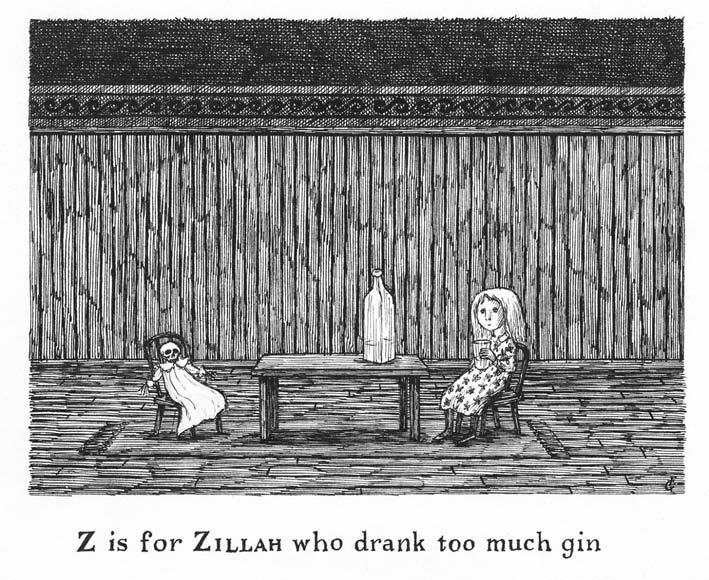
The Simpsons provides an example. In ªHomer vs. the Eighteenth Amendmentº Springfield hosts a Saint Patrick's Day parade.30 Duff beer flows with so much gusto that the beverage inadvertently fills Bart's toy horn, after which he burps and teeters and his eyes go to half-mast for comic effect. A caricature of a nineteenth- century female temperance activist shouts: ªStop the celebration. That small boy is drunk.º The adults are aghast, while the children scream, ªYeah, Bart!º
Bart appears on television with the caption ªDrunken BoyÐ LIVE,º and confronts the audience, asking ªWhat are you lookin' at?º The scene cuts to the news anchor who says, ªWhat are you looking at? The innocent words of a drunken child.º The joke lies in the moderator's turn of phrase, Bart is certainly drunk, but not innocent. The drunk child in the scene transgresses ideals of white childhood innocence. We are accustomed to the optics of the vulnerable child in arguments for temperanceÐas one of the Prohibitionist women in
Figure 6. “Z is for Zillah,” Edward Gorey, The Gashlycrumb Tinies, or After the Outing (1963). Image used with permission from The Edward Gorey Charitable Trust.
the crowd shouts, ª Will someone please think of the children?º Less familiar are scenes like this one that satirize how alcohol and childhood have been and continue to be used in political arguments about ª family values,º which is code for the white nuclear family. Some might argue that The Simpsons is not a ª children'sº show. On the contrary, from its release, the animated sitcom, like MAD Magazine before it, was ª popular with youths of all ages,º who embraced its satirical humor.31 Indeed, the lessons of the drinking curriculum are best explored in popular texts like The Simpsons that on the surface are unlikely textbooks.
An extension of the temperance movement, the pedagogies of the drinking curriculum are highly visual and circulate broadly. Like The Simpsons, most of the texts examined in this book have (or had) mass appeal, making the visual a highly accessible pedagogical form. As comics scholar Hillary Chute argues, images are often the most conducive for communicating the unspeakable.32 Likewise, images of drinking, drunkenness, and childhood contend with the volatile scenes and feelings that alcohol may evoke. This book's archive includes illustrated nineteenth- century temperance tracts, animated shorts, films, political cartoons, trade cards, stickers, public service announcements, advertisements, comics, and picture books. The list of texts examined here is not an exhaustive one, but rather a representative sampling. From the horrors of countless destitute, beaten, or murdered children in temperance fiction to the humor of drunk children on Wacky Packages bubble gum stickers, this dynamic set of visual texts of intoxication reveals how alcohol allows for the expression of contradictory feelings about childhood.
Lessons
I identify five overlapping lessons crucial to the ongoing cultural pedagogy of the drinking curriculum: D is for Drunkard; No Pets, No Drunks, No Children; Friends Don't Let Friends Drink and Drive; It's Funny When Kids Drink; and Mommy Needs a Cocktail. Though certainly not the only ones, these lessons best capture the paradoxical attachments to childhood that hide under the cover of educating or entertaining youth.
The first lesson, ªD is for Drunkardº examines the image of the drunkard in children's literature from the first picture book, The Orbis Pictus, to the 2016 graphic novel Louis Undercover. Throughout the nineteenth century, the temperance movement used childhood to shift cultural understandings of alcohol from an innocuous and pleasurable part of everyday life to a dangerous and corrupting influence. Moving from the violence of temperance fiction, the
next lesson ªNo Pets, No Drunks, No Childrenº examines intoxicated animals in animated cartoons, including characters Felix the Cat, Mickey Mouse, Dumbo, and the Drunk Stork. In the make-believe universe of animation, drunkenness fuels slapstick humor that provides a safe outlet for the expression of fears about rebellious children and childlike Others.
Bringing together the complementary pedagogies of fear and laughter discussed in the first two lessons, ªFriends Don't Let Friends Drink and Driveº closely examines Steven Spielberg's 1982 blockbuster family film E.T. the Extra-Terrestrial 33 In the movie, 10-year- old Elliott gets telekinetically drunk at school through the alien. This humorous intoxication scene circulates unremarkably alongside a growing cultural awareness about the horrors of drunk driving. That Elliott's tipsiness is played for laughs raises the question, when did drinking children become funny?
It feels irreverent to even make such a query, but it is the topic of the lesson, ªIt's Funny When Kids Drink.º This lesson focuses on the visual humor of drinking and drunk children in comics, beginning with Bill Elder's spoofs on the beer industry in MAD Magazine in the 1950s followed by a consideration of Wacky Packages created by underground comix artists, including Art Spiegelman, Jay Lynch, and Bill Griffith. Extending this suspicion about childhood innocence, Lynda Barry uses gross- out drinking humor to walk a ªfunny / not-funny lineº in her comics about girlhood, rape culture, and alcohol that will make some laugh and others turn away.34
The last lesson further pulls out the interwoven threads of violence and humor. ªMommy Needs a Cocktailº traces the legacies of the use of idealized white childhood innocence to sell alcohol as an antidote for the misery of motherhood. Specifically, intoxicationÐ real or performedÐ sanctions an outpouring of maternal animosity through parodying, defacing, and repurposing cute children's commodities for laughs. This alcohol-infused humor is doubleedged as it delights in the violence of child's play even as it infantilizes women through association with the diminutive accouterments of childhood. The book closes aptly, with a final exam that considers how the Covid-19 pandemic brought cultural ambivalence about alcohol and children back into the open in ways that require an understanding of the lessons of the drinking curriculum to fully comprehend.
Across time one enigmatic theme remains constant: while one adult hand reaches out to protect the child from alcohol, another one simultaneously invites her to take a sip. Examining dif ferent visual genres, from the overtly violent to the humorous, the moralistic to the profane, this book aims to understand what adults perform, value, and test when childhood, alcohol,
and intoxication are pictured together. It offers an intervention into and, at times, an irreverent take on dominant protectionist paradigms that sanctify childhood as implicitly innocent. The Drinking Curriculum centers the paradoxical graphic narratives our culture uses to teach about alcohol, the roots of these pictorial tales in the nineteenth century, and the discursive hangover we nurse into the twenty-first.
Lesson One
D is for Drunkard
During the seventeenth and eighteenth centuries in the United States, alcoholic beverages were largely ªregarded as good and healthy; alcohol was tonic, medicine, stimulant and relaxant. It was drunk at all hours of the day and night, by men and women of all social classes, and it was routinely given to children.º 1 In Drinking in Amer ica: Our Secret History, Susan Cheever states that even in the 1820s ª children drank before school, during school at recess, and after school,º and that nineteenth- century elementary school pupils regularly started their day ªwith `flip'Ð grain alcohol and fruit juice.º 2 Alcohol was an everyday presence in the lives of many youth (such as the boy who loved rum discussed in the introduction to this book), who were taught to drink small amounts as babies to build up their tolerance to alcohol.3 These examples of childhood drinking are flashpoints in a complex history of alcohol use and abuse in the United States. This first lesson chronicles how childhood and children's literature became a battleground upon which temperance reformers fought for abstinence.
While many Americans imbibed copious amounts of alcohol, others voiced concerns about U.S. drinking habits. In 1834 a temperance advocate warned that the United States ªwas fast becoming a nation of drunkards.º 4 These worries were tied to new understandings of alcohol as harmful for the individual and for society. Beginning in the late eighteenth and early nineteenth centuries, excessive consumption of hard liquor came to be understood as a disease. Notably, in 1785, Benjamin Rush, Philadelphia physician and signer of the Declaration of Independence, published the pamphlet, An Inquiry into the Effects of Ardent Spirits on the Human Body and Mind. 5 He defined ardent spirits as distilled liquors. In a later edition Rush included ªA Moral and Physical
Thermometerº on which beer and wine remained under the tenets of temperance and led to ªcheerfulness, strength, and nourishment, when taken only in small quantities, and at meals.º In contrast, ªdrams of Gin, Brandy and Rum in the morningº led to numerous vices like horse-racing and swearing as well as diseases, including inflamed eyes, red nose and face, sore and swelled legs, jaundice, dropsy, epilepsy, madness, and despair.6 Beer and wine in moderation remained respectable. Rush discussed symptoms of acute and chronic drunkenness, and how the habitual overconsumption of hard liquor was a progressive disease; he also suggested a recovery model in which confirmed drunkards could go to a sober house for treatment. His tract medicalized alcohol abuse and ªalmost single- handedly launched the American temperance movement.º 7
Tied to broader crusades for abolition and suffrage that gained momentum in the 1830s and 1840s, temperance emerged out of Protestant churches in the United States. Advocates asked first for moderation, then abstinence, and, finally, largely through the efforts of the Anti- Saloon League, Prohibition through local, state, and national law. Temperance was also a global movement that is best understood as ªa mutable and complex set of ideas, assumptions, rationales, and sources of identity, shaped and claimed by diverse, often competing groups and individuals over time, in dif ferent contexts, and for different purposes.º 8 For example, Black reformers linked the liquor industry to predatory capitalism and slavery. It is often assumed that temperance activism was solely the purview of white evangelicals; however, Mark Lawrence Schrad argues that ªnearly every major Black abolitionist and civil rights leader before World War IÐ from Frederick Douglass, Martin Delany and Sojourner Truth to F.E.W. Harper, Ida B. Wells, W.E.B. Du Bois, and Booker T. WashingtonÐ endorsed temperance and prohibition.º 9 Similarly, Nazera Sadiq Wright demonstrates how temperance tales published in the Children's Department of the Colored American were interwoven with discourses of racial uplift and respectability.10 Children's texts were a site of temperance activism and are an archive through which to view the medicalization of alcohol across the nineteenth century via the representation of the drunkard.
As a socializing mechanism, children's texts facilitate the circulation of meanings about drunkenness, visualizing cultural norms about who can get intoxicated, where, and how to act when drunk. Acceptable and unacceptable displays of inebriation are culturally bound, and from its inception, children's literature sought to teach its implied readers the moral ideal of temperance. Importantly, lessons about how to drink alcohol did not stand apart from the mainstream of children's literature; instead, they were fully incorporated into a genre highly adapted to cultural pedagogy. The first picture book for children, John Amos Comenius's Orbis Sensualium Pictus (Visible World ), originally
published in 1658 and released in the United States in 1810, aimed to make learning entertaining, and it was a ªmegahit in children's publishingº as well as a ground-breaking text within education.11 The book centered on images and objects, arguing that children would learn to read through the senses. Pictorial literacy lessons in Latin, ABC's, and the natural world worked alongside moral education. Long considered a landmark text in education and children's literature, the Orbis Pictus is also a foundational visual primer within the drinking curriculum.
The Orbis Pictus includes instructional diagrams about making wine and brewing beer alongside other daily activities like baking bread. Most germane to this study, Comenius includes a chapter on ªTemperanceº within the moral philosophy section in which he advises the reader to prefer a mean to ªmeat and drinkº and refrain desire ªas with a bridleº (see Figure 7). The reasons to seek out moderation in alcohol consumption are fully illustrated. The numbered
Figure 7. “Temperance,” John Amos Comenius, Orbis Sensualium Pictus (1658).
engraving pictures the trouble with intemperance for readers: when revelers are made drunk (4.), they stumble (5.), spue (6.), and brabble (7.). Writes Comenius: ªFrom drunkenness proceeds lasciviousness from this a lewd life amongst whoremasters (8.) and whores (9.) in kissing, touching, embracing, and dancing (10.)º 12 A vomiting man is pictured, and in the background, a prostitute sits imbibing with a man. Socially defined meanings about drunkenness are graphically coded, giving readers a lesson about temperance as both a moral good and as a gendered behav ior. Pleasure and indulgence are associated with masculinity, whereas intoxicated women are pictured as ªwhores,º a visual pedagogy about drunkenness, femininity, and sexuality that continues to stick. Alcohol, for menÐ its rightful imbibersÐis not a demon or a poison; rather, it is a beverage to enjoy in moderation. As the temperance movement took hold, advocates doubled down on pathologizing alcohol, and drunken comportment took on new meanings.13
Notably, as understandings of drinking went ªfrom convivial to miserable, sociable to antisocial, healthy to diseasedº so, too, did images of drinking and drunkenness in children's literature.14 Karen Sánchez-Eppler notes that reformers focused especially on creating and circulating materials for children to move the temperance message into the home where it would function as ªmoral suasion to transform the public soul.º 15 Drunkards were depicted in a full range of materials from alphabet books to magic lantern slides to school hygiene textbooks as activists worked to recruit a ªcold water armyº of youth. For instance, in A Was an Archer, or A New Amusing Alphabet For Children the popular rhyme reads: ªA was an Archer, and Shot at a Frog, B was a Butcher and kept a bull- dog, C was a Captain, all covered in lace, and D was a Drunkard and had a red face.º 16 The drunkard appears alongside the archer, the butcher, and the captain as an identity and as a mnemonic for the phonetic D (see Figure 8). Children's texts reflect a broader cultural shift and negotiation of ideas about alcohol consumption put forth via the temperance movement, especially that alcohol is a poison, drinking a disease, and abstinence the only cure.
As the pathologizing of drunkenness took hold in the nineteenth century, education was viewed as ªthe wisest and most certain method of combating intemperance.º 17 Two graphic children's texts by physician Dr. Charles Jewett provide an example of how these new connotations about drunkenness gained purchase. In 1840 Jewett published Temperance Toy about the ills of drinking set to the rhyme of ªThe House That Jack Built,º writing in the introduction that ªit is not more a matter of regret than surprise that, among the multitude of picture-books which are annually published, so few should have been got up with a view to mingle with amusement, instructions in relation to the
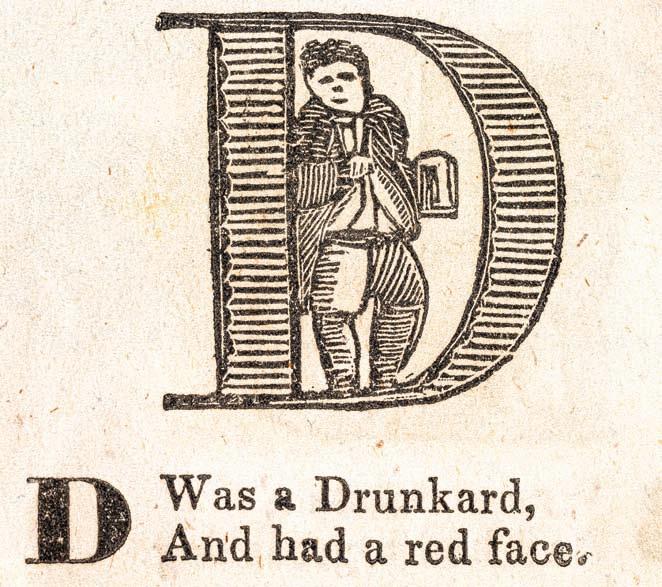
subject of temperance.º 18 On the first page of Temperance Toy an inebriated man stands red-faced, smoking, in patched pants, with a bottle in his vest pocket. The red face and bulbous nose (often a signifier, ªalcoholic's noseº or rhinophyma is due to an untreated skin condition, rosacea) code him as a drunkard. Visual markers like these reveal how ªthe interpretations people make of drinking, of the intoxicated state, and of behav ior under intoxication are only partially shaped by the chemical or pharmacological effects of alcohol.º19 The text that accompanies the image reads, ª Here is the man, whose bottle and can, are leading him down to perditionº (see Figure 9).20 The bottle ushers the man to eternal damnation, and, as the illustration testifies, to disease and poverty in the here and now.
Similarly, Jewett's The Youth's Temperance Lecturer (1841), published the following year for older readers, also pictured drunkards as morally bankrupt and alcohol as a poison. In ªThe Beer Drunkard,º an overweight man sits in a
Figure 8. “D is for Drunkard,” from A Was an Archer, or A New Amusing Alphabet For Children (1836). Courtesy, American Antiquarian Society.
chair with his swollen foot wrapped in a bandage and propped on a stool accompanied by a rhyme asking why men drink beer if it ªswells up their face, and makes them so lame they can't goº (see Figure 10).21 As the temperance movement morphed from moderation to abstinence, all alcohol, including beer, was considered dangerous. Visual renderings of the physiological effects of drinking communicate these culturally contingent understandings. Jewett describes the beer drinker's blood as ªpoisoned,º the face bloated, and the foot so engorged by gout that he cannot walk without a crutch.
Figure 9. Charles Jewett, Temperance Toy (1840).
The Youth's Temperance Lecturer also includes informational sections ranging from how alcoholic drinks are made to the wholesale trade of these beverages. Lessons about alcohol were also social messages because intoxication attacked sobriety, industriousness, and other white middle- class norms of masculinity. Temperance activists blamed social ills on those who sold intoxicating beverages like Albany Ale for profit as well as public drinking establishments such as the tavern in which the beer drinker sits.
In his introduction, Jewett warns that ªNo little boy or girl ever thought they should become a drunkard. You do not think so now, little reader, and yet you may be one, if your parents and yourself do not take great care to prevent it,º and he argues that reading The Youth's Temperance Lecturer carefully alongside the right influences and God's blessing might save readers from the fate of the ªdrunkard's grave.º 22 There is little doubt that the beer- drinking man is headed there as the easily recognizable trope of the drunkard was employed in visual temperance arguments about alcohol. Significantly, the man in the picture is not just intoxicated, he is addicted. The dangers of alcohol were medicalized and politicized, and that converged in visualizing temperance, equating personal and public health via road-to-ruin narratives.
Figure 10. Charles Jewett, The Youth’s Temperance Lecturer (1841). Courtesy, Harvard Library.
